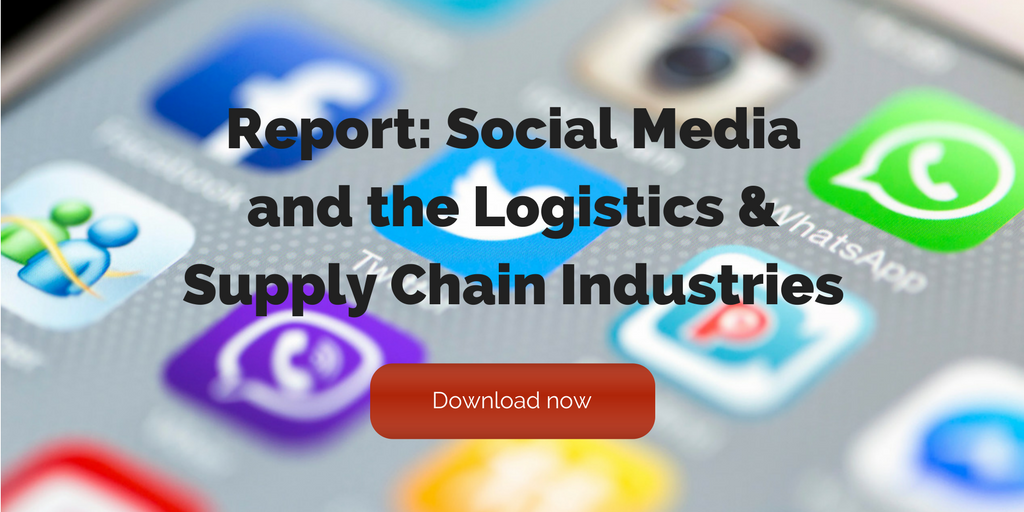
by Fronetics | Jan 12, 2017 | Blog, Content Marketing, Marketing, Social Media, Strategy
Competitive benchmarking should be part of your data-driven marketing strategy.
In August 2016, Elaine Thompson claimed the mantle of world’s fastest woman, and Michael Phelps became the most decorated Olympian of all time. Thompson and Phelps achieved these incredible feats by continuously pushing themselves to do better. To do this, they not only tracked and measured their personal performance, but they also tracked the performance of their peers and of their competitors. Together, this data gave Thompson and Phelps the knowledge and drive needed to improve their own performance.
When it comes to measuring marketing performance, most marketers look inward, focusing on key performance indictors (KPIs) such as website traffic, open rates, social engagement metrics, and conversion rates. While these inward facing KPIs are important, it is also important to look at what is happening outside your organization and to benchmark your marketing performance against peers and competitors. This will give you the knowledge and drive you need to improve your performance and chance of success. It can help you to identify threats and strategic opportunities.
WHO
When adding competitive benchmarking to your marketing strategy the first step is to determine who to benchmark against. I recommend not just benchmarking against direct competitors, but to also benchmark against industry leaders, and against a company or two that you think is excelling (this company does not need to be in your industry). By taking this more global view, you can gain ideas and intelligence from industry leaders and from the creative and strategic minds of top performers. A word of caution – be strategic and keep the number of companies to a reasonable number.
WHAT
While you should determine the KPIs to track and measure based on your business and marketing goals, here are some to consider:
- Traffic by channel
- Visits by source
- Bounce rate
- Keywords
- PPC activity and spending
- Social engagement
- Social reach
- Posting times
- Top performing content
- Meta description (company positioning)
As with your inward facing KPIs, action is key. Use the data you gather to inform your strategy.
You might also like:

by Fronetics | Dec 8, 2016 | Blog, Content Marketing, Logistics, Marketing, Social Media, Strategy, Supply Chain
How 2 new developments have changed the world of marketing
The year 2017 is about to dawn, and with it marks a decade anniversary of the birth of two seismic changes in how people view the world around them. No doubt you’ve incorporated both of these changes into your daily life, but have you fully absorbed them into the way you conduct your business?
In supply chain and logistics businesses, the general answer is “no.” That’s a significant problem for a company’s long-term success, but it can be remedied.
Let’s look at the two world-changing phenomena, how rapidly they’ve reshaped the world, why they are crucial to your company, and steps you can take to fuse them into your business.
A new website is launched
It was just 10 years ago that a new website poked its head up on the internet, offering to the general public an online social network so people could keep in contact with friends and family. Originally designed as a private forum for college and high school students to connect online, but its founders thought perhaps it might catch on with the public, too.
In late 2006, when Facebook opened its website to anyone who wanted to sign on, it saw its users soar by 33%, to 8 million. But that was barely a blip compared to the social and business marketing revolution it has created worldwide. Now over 1.8 billion people use Facebook, and hundreds of millions more use other social media channels that have sprung up in its wake — Twitter, LinkedIn, Snap, Instagram, and many others.
For businesses, social media has opened up an entirely new way to find and interact with customers. It’s changed the traditional ground rules of marketing and advertising. And it’s created a completely new and sophisticated tool — big data — that provides unprecedented amounts of information about customers and potential customers. That information is valuable.
A new phone dials in
The second revolution is now literally in the hands of one quarter of the world’s population.
Around the time Facebook launched, Apple came out with its first foray into the emerging field of cellular phones. The iPhone was an instant hit, selling a little over 1 million phones in its debut year, 2007. It combined the functions of a smart cellphone with intuitive ways to connect to the internet. Rival technologies quickly followed suit. Today, an estimated 2.6 billion people worldwide use a smartphone.
Mobile communication, via smartphones, is now the dominant way that people access the internet. About 55% of people use their phones to surf the web. And while a decade ago they spent less than 30 minutes per day using their phone’s functions, now it’s around 3 hours per day. Here’s another thing to consider — most people have their cellphones on their person during all their waking hours, and they check it over 100 times a day.
For businesses, having a mobile phone strategy and a well-managed mobile presence is absolutely essential. When it’s working at full throttle, it’s populating the social media apps that people are checking dozens of times per day. It’s providing compelling content that they want to read; it’s building up name-brand recognition; and it’s growing brand loyalty.
Looking toward 2017
Every year the boundaries of social media and internet marketing get pushed. It is hard to find a consensus on what the dominant trend will be. Will Twitter dwindle and other social media platforms take its place? Some think that companies will need to be faster and smarter about creating content linked to whatever the hot topic of the day is. Others don’t see a dominate change on the horizon; instead incremental changes to what’s already online.
For supply chain and logistics companies that want to establish a foothold or build on an existing beachhead, the solutions lie in the new evolution of customer interaction, called content marketing.
The landscape changes ahead are hard to predict, but there are some reliable existing strategies to follow. Fronetics has put together a guide on how supply chain and logistics companies can formulate tactics to take advantage of the opportunities that a content marketing plan and a robust social media presence can create. Click below to download the guide.

Who knows what social innovations the next decade will spawn. If the past decade is any guide, another revolution is coming. Are you keeping pace?
Related posts:

by Fronetics | Nov 28, 2016 | Blog, Content Marketing, Marketing, Social Media
Supply chain companies can use influencers in their prospects’ network as a strategic tool to gain new business.
The term “influencer marketing” often brings to mind celebrities endorsing their favorite brand of bottled water or jeans — not an image that is particularly useful for B2B businesses. However, B2B marketers should be taking this powerful trend in content marketing seriously.
While your supply chain may not benefit from an endorsement by Jennifer Aniston, you likely have brand influencers at your fingertips, which you may not even realize. Effectively leveraging these endorsements is a strategic tool for gaining new business.
Developing an influencer marketing strategy
Once you’ve identified your natural influencers, here are three important steps for building an influencer marketing strategy for your company.
1) Know your target buyer.
Rather than a scatter-shot approach, making the effort on the front end to identify your target buyer personas allows you to strategically target your customers. Understanding their needs, challenges, and purchasing structures is the key foundation to any content marketing effort, and influencer marketing is no exception.
2) Identify your industry influencers.
Industry influencers aren’t just the big names, though those people are certainly influential. It comes down to how your buyers make their purchasing decisions. The 2016 B2B Buyer’s Survey Report found that nearly half of B2B buyers use peers and colleagues as a major information resource when choosing a vendor.
Who are those peers and colleagues whom your target buyers turn to? Use every resource at your disposal to determine how they get their information. Connecting on LinkedIn, Twitter, and other social networks is a great way to do this.
3) Use the right tools for your business.
Any effective content marketing strategy depends on using the most effective tools. In a post for CMS Connected, Leah Kinthaert makes a strong pitch for Twitter. She cites the ease of plugging in a hashtag or keyword in giving you “volumes of information — from who the influencers are in that industry to what today’s breaking news is on the topic.” Furthermore, clicking on a hashtag shows you what your competition is doing as well.
The bottom line is that influencer marketing can be an extremely effective aspect of a B2B business’ content marketing strategy. Knowing your buyers, finding your influencers, and effectively leveraging this information will help boost your social credibility, as well as generating new business.
Related posts:

by Fronetics | Nov 22, 2016 | Blog, Content Marketing, Marketing, Strategy
By repurposing and thoughtfully packaging the content you have already published, you can assist your sales force in closing deals.
How many of your sales force’s calls turn into appointments? Probably very few. More and more of today’s buyers don’t want to speak with sales reps about products.
But, then, who will buyers speak to? A LinkedIn survey of 1,500 purchasers and influencers found that 86% of buyers will listen if sales professionals provide insights about their business. What’s more, 92% of buyers engage with a professional if that person is a known industry thought leader.
So, what if your sales force approached prospects not as a sales representative, but as a source of information, insight, and thought leadership? What if you already had the tools to help your sales staff achieve this reputation? If you are publishing original content, then you do.
Let them have content
Arm a sales rep with targeted content to share with prospects during specific moments in the purchase process, and it will advance his or her reputation as a source of knowledge. That can be the key to getting a foot in the door, advancing through the final stages of a purchasers’ decision, or closing the deal.
Here are four easy ideas for repurposing the content you have already created to assist your sales force.
1. Simply share.
Encourage sales representatives to follow your company and its content producers on social media and to share relevant articles with their networks. They can repost both your original content and curated articles as well.
2. Get visual.
Turn your evergreen content into easy-to-read infographics or another visual format. Send with the sales representatives to meetings with prospects, or encourage them to email the content to certain contacts as a lead-nurturing exercise.
3. Gather news.
In planning your content, you likely consider industry news, trends, and happenings. Keep a list of these points and supporting articles, and have the sales team distribute to their contacts on a regular basis, like a newsletter, to demonstrate knowledge of the business landscape.
4. Build case studies.
Develop several case studies from your company’s success stories. Organize them around specific pain points that your buyer personas face. Provide these to the sales team with a list of key points from each study to use as either talking points or to send as follow-up emails to prospects facing the same challenges.
These are a great starting point for bridging the gap between the marketing department and sales force with content. But don’t let it stop there.
Set up a role-playing exercise with your sales team, where you are the customer. Analyze their pitch and see how content can fill the holes. It’s likely you have built a lot of content around many of the reps’ talking points, which they can use to further inform their pitches and to use as lead-nurturing collateral.
Related posts:

by Fronetics | Nov 9, 2016 | Blog, Content Marketing, Marketing, Social Media
Try these content formats and related tools for B2B social media content that keeps your audience engaged.
Conventional wisdom, careful market research, and common sense are all telling us that social media is transforming the way we do business. We know we should be leveraging these platforms to drive awareness, engagement, and revenue for our businesses. But creating content to share with your audience is actually more difficult than it sounds.
Character limits and the increasingly visual nature of these platforms means marketers are having to get creative with how they engage their audience. Here are four ideas and related tools that can help B2B organizations produce interesting, informative content that is suited to social media.
1) Video
The 2016 Social Media Marketing Industry Report rates the growing prevalence of video among its top findings for the year. It found that 60% of marketers are now using video in their marketing, and 73% are making it a goal to increase their use of video. This trend is for good reason — 64% of business that use video reported that it has led directly to increased sales.
Video is an efficient, visually appealing way to present your content in an imminently shareable format. Here are some online tools to help you create effective video content for your business.
- PowToon: A tool that guides users through the creation of animated videos and presentations, PowToon boasts an approachable interface and minimalist design that makes it simple for marketers with limited video experience.
- Magisto: Ideal for creating videos with emotional impact, Magisto features tutorials on creating video for your business, and allows users to create highly customizable video content through a simple interface.
- WeVideo: Featuring advanced video-editing tools with a simple interface, WeVideo is a cloud-based collaborative video editor that allows users the convenience of cloud video storage.
- Wideo: Allowing you to create videos in minutes, Wideo offers a variety of plans aimed toward working with your existing marketing strategy.
Creating your video is just the first step. Here are some places to upload and share your content:
- YouTube: The titan of video sharing services, YouTube allows for public and private upload, and gives users free access to analytics tools for their videos. Along the way, take a look at these valuable tips for getting more views on your YouTube videos.
- Vimeo: With a similar platform to YouTube, Vimeo is ideal for video sharing, discovery, and generating creativity.
2) Infographics
Social media platforms are becoming increasingly visual. A well-designed infographic makes your content visually appealing and delivers your message in a clear, easily digestible format. A recent report from eMarketer and the communications firm Lewis found the demands of social media and the format’s high engagement rates are key reasons for its use.
Here are some online resources that let you create and share infographics:
- ly: This site features a vast array of templates, which you can easily edit and customize and share immediately on social media platforms.
- Piktochart: With an easy-to-navigate interface, Piktochart allows you to create intricate, design-rich graphics, complete with icons, images, charts, and interactive maps, and publish them directly to social media platforms.
- Canva: This site allows for quick creation of infographics, as well as presentation covers, social media images, online advertisements, and flyers.
- Visme: A simple interface, Visme allows you to translate your ideas into engaging infographics, presentations, reports, and more. You can share your content online as a URL or on social media, embed it on your website, or download it.
3) Podcasts
The 2016 SME Report identifies podcasting as a relatively untapped way for marketers to engage with social media audiences. The audience for podcasts in the United States alone is close to 60 million people, making this medium a significant opportunity for businesses to engage with potential clients.
Here are some tools that can help you create quality audio content:
- Audacity: This open-source audio software lets you record audio, convert tapes and records into digital recordings, and add your own audio effects.
- Podbean: This tool lets you quickly create and share professional podcasts, no programming knowledge necessary. You can publish them directly to social media platforms.
4) Slides
If you have a lot of dense, industry-specific content that you want to get out to your audience, presentations are ideal. Breaking up your content into slides lets you get the information to your network in an engaging and visually appealing way.
Here are some tools that help you create and share professional presentations:
- SlideShare: LinkedIn’s platform lets you build, upload, and edit presentations, and share them on social media.
- SlideBoom: Ideal for converting PowerPoint presentations to Flash, SlideBoom lets you share your presentations with your target audience.
- Prezi: This tool is available for download or as an online editor, and it allows you to add animations to your presentations and share your content on Twitter, Facebook, and LinkedIn.
Social media has changed the way businesses engage with their target customer base. Embracing these tools is key to creating and maintaining an active and loyal audience.
Related posts:








